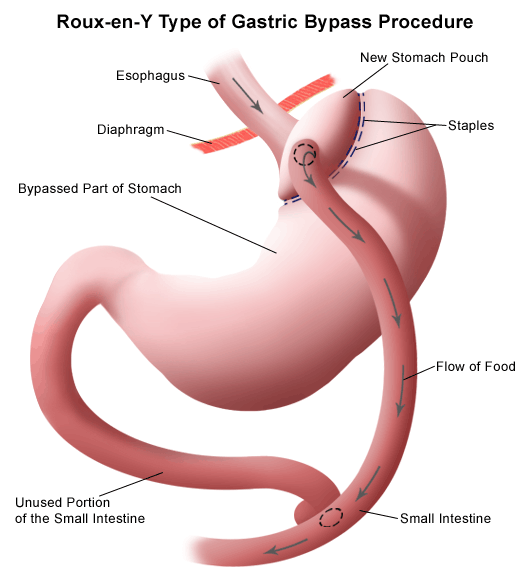What is Bariatric Surgery?
Bariatric surgery (weight loss surgery) includes a variety of procedures performed on people who are obese.
Bariatric surgical procedures include those that cause weight loss by restricting the amount of food the stomach can hold, those that cause weight loss primarily as a result of malabsorption of nutrients, and those that cause weight loss both by gastric restriction and malabsorption. Bariatric procedures also often cause hormonal changes. Most bariatric procedures today are performed using minimally invasive techniques (laparoscopic surgery).
There are several types of bariatric (surgical weight loss) procedures. Some procedures restrict the amount of food that can be eaten at one time and others bypass segments of the intestines to limit the absorption of calories. There are many types of weight-loss surgery, known collectively as bariatric surgery.
You should discuss all of the available surgical procedures and determine which procedure is best for you.
-
Laparoscopic Sleeve Gastrectomy (LSG) is a restrictive procedure that reduces the size of the stomach and limits food intake. We perform the Sleeve Gastrectomy as a laparoscopic procedure. This involves making five or six small incisions in the abdomen and performing the procedure using a video camera (laparoscope) and long instruments that are placed through these small incisions.
If you have a BMI ( Calculate your BMI ) over 60 or significant medical problems that increase your risk for undergoing anesthesia or gastric bypass then Laparoscopic Sleeve Gastrectomy is considered as best choice. Laparoscopic Sleeve Gastrectomy may also be offered as part of a clinical investigation if you have a lower BMI and diabetes.
During the Laparoscopic Sleeve Gastrectomy, about 75% of the stomach is removed leaving a narrow gastric "tube" or "sleeve". No intestines are removed or bypassed during the sleeve gastrectomy. The LSG takes one to two hours to complete.
Sleeve Gastrectomy is a restrictive procedure. It greatly reduces the size of your stomach and limits the amount of food that can be eaten at one time. It does not cause decreased absorption of nutrients or bypass your intestines. After eating a small amount of food, you will feel full very quickly and continue to feel full for several hours.
The Mini-Gastric Bypass ( MGB ) procedure is a short, simple, successful and inexpensive technique in weight loss surgery. The operation usually takes less than an hour and the hospital stay is usually less than 24 hours.
With excellent long term weight loss, minimal pain and the option for reversal or revision should the need ever occur, it's not surprising that peoples are choosing the Mini-Gastric Bypass as their Laparoscopic gastric Bypass procedure over other types of weight loss surgery.
Mini gastric bypass surgery is a short and relatively simple procedure that has been shown by the available research to have low risk and result in good short and long-term weight loss.
As the name suggests, mini gastric bypass surgery is a simplified form of Roux-en-Y gastric bypass surgery (RNY). A thorough review of the studies that specifically evaluated the effectiveness of MGBP shows that the procedure is shorter, easier, less expensive and has lower risk and equally successful outcomes as RNY.
Mini gastric bypass usually bypasses much more of the intestine than a standard gastric bypass which could lead to more vitamin and mineral deficiencies.
Roux-en-Y laparoscopic gastric bypass surgery is a safe, effective and well-researched option for weight loss surgery. It carries a slightly higher risk than less invasive procedures such as lap band surgery but also yields consistently positive results.
On average, people lose more than half of their excess weight following Roux-en-Y surgery. Ten years after weight-loss surgery, many people have gained 20% to 25% of the weight they lost. The long-term success is highest in people who are realistic about how much weight will be lost and who keep appointments with a medical team, follow the recommended eating plan, and are physically active
In Roux-en-Y, the stomach is divided, and a small pouch, which limits calories that can be taken in on a daily basis to less than 1,000, is formed as simultaneously the majority of the stomach is sealed off. A portion of the small intestine is then divided and sewn to the newly created small stomach pouch. This process limits the body's ability to absorb calories. This procedure can be performed as a standard open surgery, or as a laparoscopic (minimally invasive) surgery.
Weight-loss surgery does not remove fatty tissue. It is not cosmetic surgery.
Some studies show that people who have weight-loss surgery are less likely to die from heart problems, diabetes, or cancer compared to obese people who did not have the surgery.